A growing number of companies are helping workers gain access to payroll advances and loans, reflecting concern over the impact money problems are having on productivity levels and worker retention.
Employers, including Walmart Inc., have recently added these services. The aim is to help cash-strapped employees, many with damaged credit, cover unexpected expenses without resorting to high-cost debt.
“Employers have woken up to the fact that a majority of workers are having a lot of trouble simply getting by, never mind getting ahead,” said Sophie Raseman, head of financial solutions at Brightside, a company Comcast Corp. co-founded that provides financial guidance to workers and is testing payroll loans with some corporate clients.
Workers typically access the services online. The payroll-advance programs generally give employees the option to accelerate a portion of their next paycheck for a fee that often amounts to a few dollars. The loans are typically a couple thousand dollars, and are repaid through automatic payroll deductions over a few months to a year or longer. Approval and interest rates, generally 6% to 36%, often depend on factors including a borrower’s credit score.
Because the services deduct repayments from workers’ paychecks before the money goes to their bank accounts, default rates tend to be low.
According to an Employee Benefit Research Institute survey of 250 employers last year, 12% offer accelerated pay. The same percentage offer short-term loans repaid through payroll deductions. Another 4% and 6% plan to add the services, respectively.
Companies, meanwhile, are responding to data that indicate American workers are financially stressed. While incomes have been stagnant for many, expenses for items including health care and education have risen.
Employers are concerned about the impact on productivity and turnover. Research by Todd Baker, a senior fellow at Columbia University’s Richman Center for Business, Law and Public Policy, looked at 16 companies in the U.K. that offered payroll loans and found that borrowers had, on average, an annualized attrition rate 28% lower than the rate for all employees.
Mary Haynes, chief executive of Nazareth Home, which runs long-term-care facilities in Louisville, KY, said the company began offering accelerated paychecks through PayActiv Inc. two years ago after realizing many of its staff were incurring late fees and using payday loans. PayActiv works with 500 employers, including Walmart.
Of Nazareth’s 400 employees, 338 are enrolled in PayActiv and 280 use it regularly, Ms. Haynes said.
The benefit attracts workers and saves Nazareth money, Ms. Haynes said, by “practically eliminating” its use of a staffing agency some workers preferred because the agency provided access to paycheck advances.
Typically, payday loans charge $15 for every $100 borrowed. Bank overdraft fees often cost about $35. In contrast, PayActiv charges $5 per pay period when an employee uses the service, which also includes financial counseling and online bill payments.
Some point out that a $5 fee can equate to a high annualized percentage rate on a small short-term loan.
Robyn McGuffin, a medication technician at Nazareth Home, says PayActiv has helped her avoid late and overdraft fees of as much as $80 a month.
Ms. McGuffin, 36 years old, says she typically uses PayActiv once or twice per pay period, generally for bills due before her next paycheck arrives. The Louisville resident also used it to buy a new car battery and cover her fiancé’s share of the household expenses when he was temporarily out of work due to a medical emergency.
Some employers pair loans or accelerated paychecks with online tools to help workers budget, reduce debt and amass emergency savings.
Walmart introduced salary advances in late 2017. It has seen employees rely less on payday loans and bank overdrafts, said David Hoke, who oversees health and well-being.
Employees pay $6 a month to use PayActiv. It is embedded in an app called Even, which also includes a budgeting service that nudges users to save surpluses. Walmart covers the cost for one month per quarter and caps the amount workers can accelerate at 50% of pay. Of the company’s 1.4 million workers, 380,000 are frequent app users, Mr. Hoke said.
For those in need of larger sums, some employers offer loan services that typically advance as much as $5,000, with repayments deducted from workers’ paychecks over four months to a couple years.
Lender Kashable approves “more than 60%” of applicants, said co-CEO Einat Steklov. It considers factors including job tenure and credit scores.
The average user has a subprime credit score and pays an annual interest rate of about 20%, Ms. Steklov said. Kashable’s default rate is 5%. Borrowers who leave their jobs before repaying in full generally switch to automated bank transfers.
Learn more about how Agency Workforce Management can integrate with advanced pay software by reading our ebook.

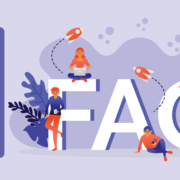
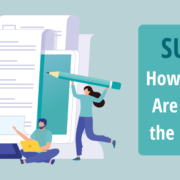

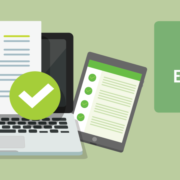

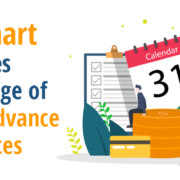
 2018 MITC
2018 MITC Overtime costs in group homes and HCBS programs have been rising in recent years due to the labor shortage. While you may never eliminate overtime completely, an incentive plan can help you reduce it. Overtime control plans provide a continual reminder that minimizing overtime is always important and shares the savings with those who did the most to make a difference.
Overtime costs in group homes and HCBS programs have been rising in recent years due to the labor shortage. While you may never eliminate overtime completely, an incentive plan can help you reduce it. Overtime control plans provide a continual reminder that minimizing overtime is always important and shares the savings with those who did the most to make a difference. Many HCBS programs involve authorizations and budget caps. But some providers may fail to maximize the authorization or, even worse, exceed the authorization. An incentive plan focused on increasing revenue, with the help of integrated time & attendance and scheduling solutions, will encourage managers and staff to maximize authorizations without exceeding them.
Many HCBS programs involve authorizations and budget caps. But some providers may fail to maximize the authorization or, even worse, exceed the authorization. An incentive plan focused on increasing revenue, with the help of integrated time & attendance and scheduling solutions, will encourage managers and staff to maximize authorizations without exceeding them.
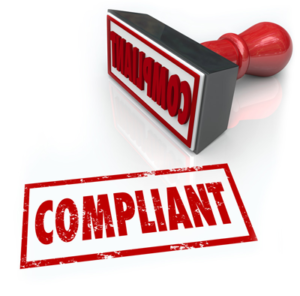 Reliable attendance is crucial for agencies, especially when one employee’s tardiness turns into another’s overtime. While employees may occasionally forget to clock in or out, 95% of an organization’s attendance records should be correct. An incentive plan encourages prompt attendance and reduces the risk of fraud.
Reliable attendance is crucial for agencies, especially when one employee’s tardiness turns into another’s overtime. While employees may occasionally forget to clock in or out, 95% of an organization’s attendance records should be correct. An incentive plan encourages prompt attendance and reduces the risk of fraud. One of the best sources for recruiting is an agency’s own staff. Employees often know of others in the same field who might be interested in a new opportunity, and they can speak to their character. Incentive plans can motivate them to reach out to their network and guide them toward agency job openings.
One of the best sources for recruiting is an agency’s own staff. Employees often know of others in the same field who might be interested in a new opportunity, and they can speak to their character. Incentive plans can motivate them to reach out to their network and guide them toward agency job openings. 2018 MITC
2018 MITC

 An automated alert system, such as Agency Workforce Management’s eNotify, eliminates the problems of a phone campaign. Instead of a mass network of phone calls, a manager can send just one alert to everyone within seconds. Alternatively, the manager can send alerts to specific groups of people; for example, if a notification only affects group home staff, the rest of the agency will not receive it. The benefit of eNotify is that it saves time – allowing employees to take action more quickly – and it eliminates the burden of maintaining contact lists.
An automated alert system, such as Agency Workforce Management’s eNotify, eliminates the problems of a phone campaign. Instead of a mass network of phone calls, a manager can send just one alert to everyone within seconds. Alternatively, the manager can send alerts to specific groups of people; for example, if a notification only affects group home staff, the rest of the agency will not receive it. The benefit of eNotify is that it saves time – allowing employees to take action more quickly – and it eliminates the burden of maintaining contact lists. 2018 MITC
2018 MITC